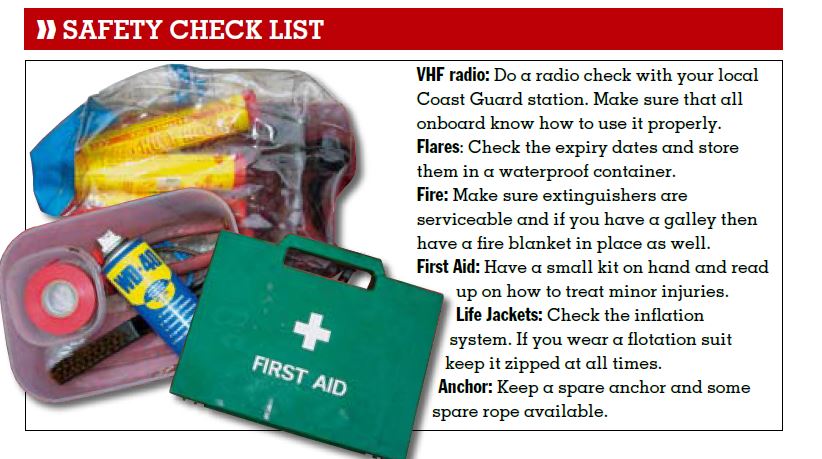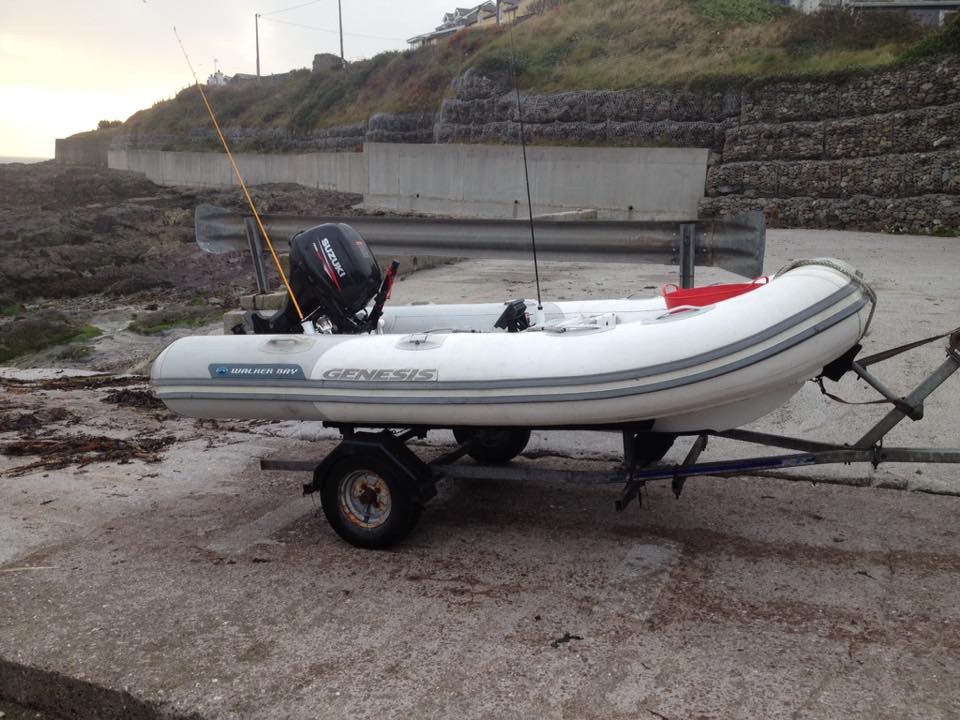* Keep It Safe

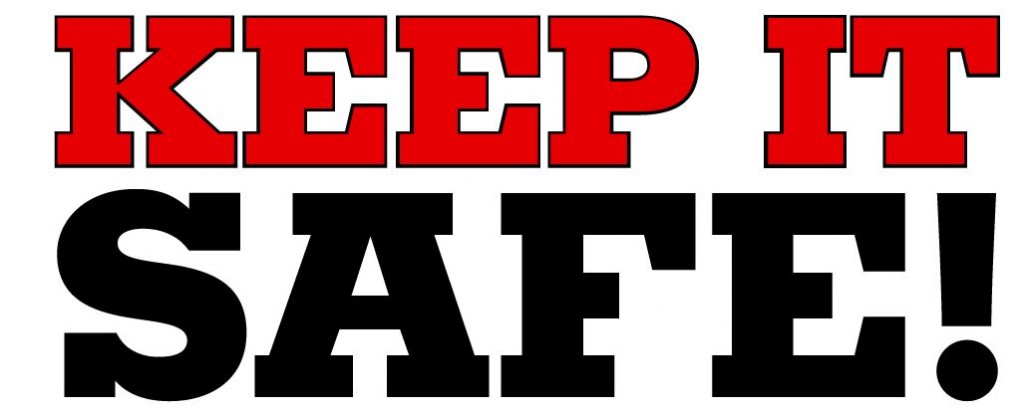 In credit crunch Ireland you get little for nothing, but we do have a huge network of people ready to help if you are in difficulty on the water. Just who does answer the call when a boat gets into difficulties? We are all aware of the RNLI, the brave volunteers who selflessly launch any time they are called. There are also the unsung heroes in the Coast Guard radio stations who coordinate the rescue efforts around the coast. Most of us have seen the big red and white bird, the Coast Guard Helicopter, at some time or other. But did you ever think that if , God forbid, you had to be airlifted from your boat you could be fished out by some anglers?
In credit crunch Ireland you get little for nothing, but we do have a huge network of people ready to help if you are in difficulty on the water. Just who does answer the call when a boat gets into difficulties? We are all aware of the RNLI, the brave volunteers who selflessly launch any time they are called. There are also the unsung heroes in the Coast Guard radio stations who coordinate the rescue efforts around the coast. Most of us have seen the big red and white bird, the Coast Guard Helicopter, at some time or other. But did you ever think that if , God forbid, you had to be airlifted from your boat you could be fished out by some anglers?
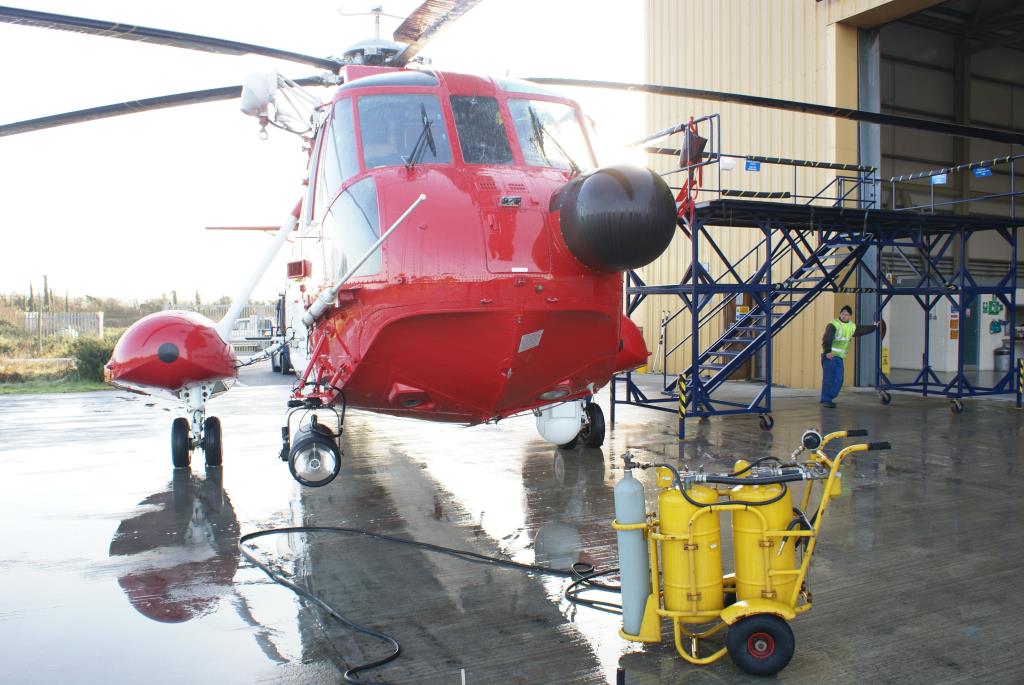
During the Small Boats Festival in Cork last year, we met an old mate, Neville Murphy, skipper of The Great White a fine specimen of an Arvor. Nev has a job that some might envy at times, but when it is blowing a gale in the middle of the night would you like to be winched from a helicopter to a waiting vessel or life raft below? It is the type of job that you just have to talk about and in fairness to Neville he is the patient type who will answer all sorts of seemingly stupid questions from a generally awed audience!
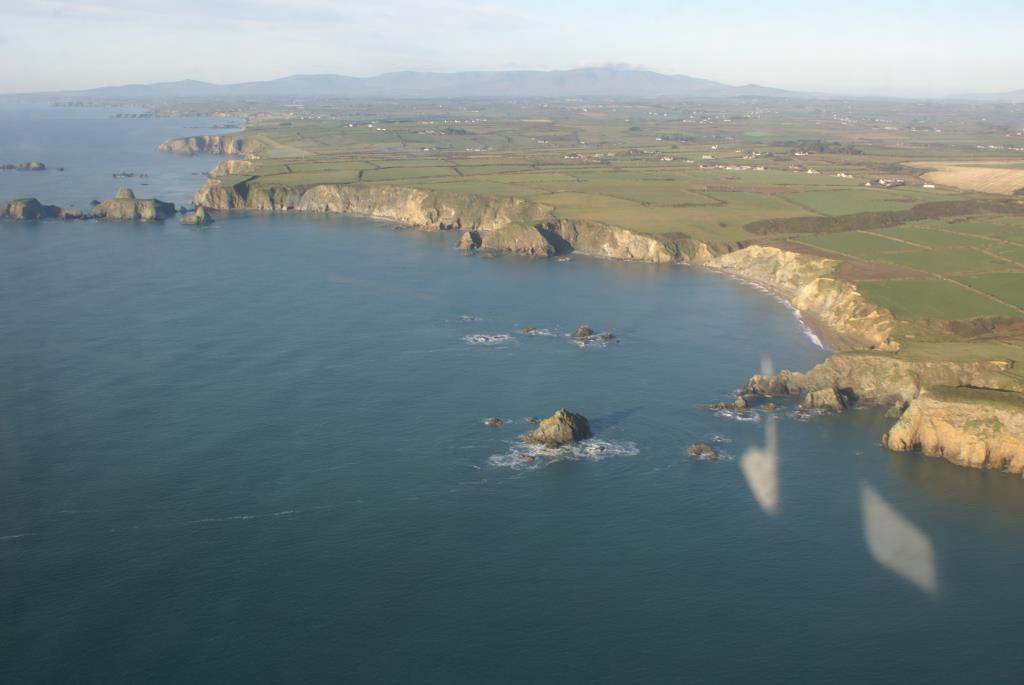
Neville’s teammate on The Great White is Barry Cahill. When not servicing the rescue helicopter Barry can often be found on his own vessel Katie, another Arvor. If that wasn’t enough, the skipper of Screaming Reels, Martyn Rayner, is also on hand, Martyn’s day job involves piloting the Sikorsky S61N Search And Rescue (SAR) helicopter. We hatched a plan and it was organised that we would travel to Waterford Regional Airport to see the setup that’s in place and maybe just to check out what it is that gives these guys so much time on their hands for fishing!
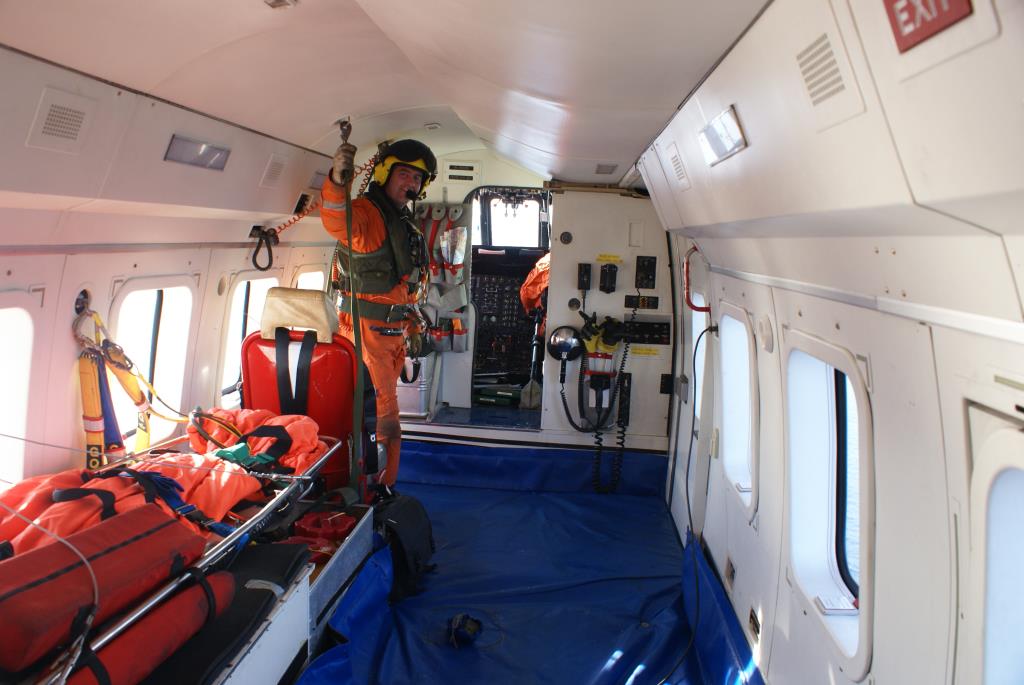
The Coast Guard facility in Waterford is an unimposing building on the grounds of the airport. As soon as you walk in through the doors you can be assured that there is something different going on in here. There is a large notice board on the stairway that is covered by newspaper and magazine reports of operations that have been undertaken by Irish helicopter crews and there are lots. We meet Neville and head for the ready room for a cuppa while he outlines the plans for the morning. We had expected to crawl about the helicopter and check out the facilities but no, we are going on a training mission! The necessary clearance from both company and Coast Guard has been granted, so it looks like we are going to have a “Day on the Water” with the Coast Guard!
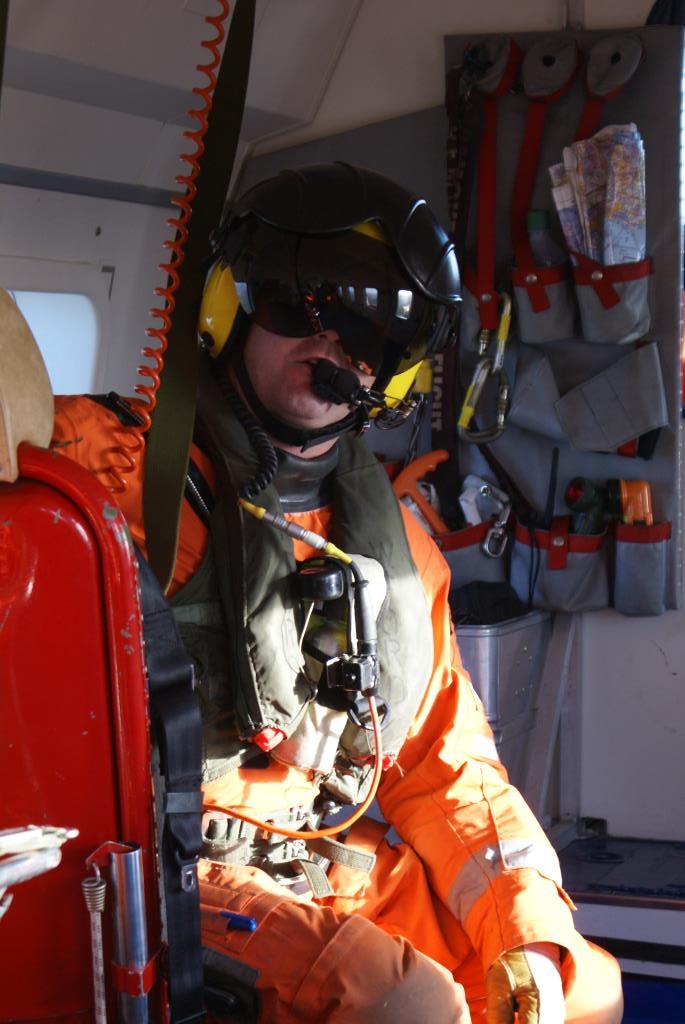
Many people do not realise but the Coast Guard Search and Rescue (SAR) function is carried out by a private company. CHC Ltd has been providing the Irish SAR function for a good many years now. The company operates from Waterford, Dublin, Shannon and Sligo. There are long-range helicopters based in each of these areas and each has a defined area of operation. Once an emergency call has been received by the Marine Rescue Coordination Centre (MRCC), the centre mobilises the services required depending on the situation. A hotline to Waterford will mobilise the rescue helicopter and within 15 minutes during the day and 45 minutes during the night the crew will be underway to the location. Under normal conditions, if these things can be described as normal, the helicopter is underway within seven minutes, a comforting thought if you are in a dangerous situation.
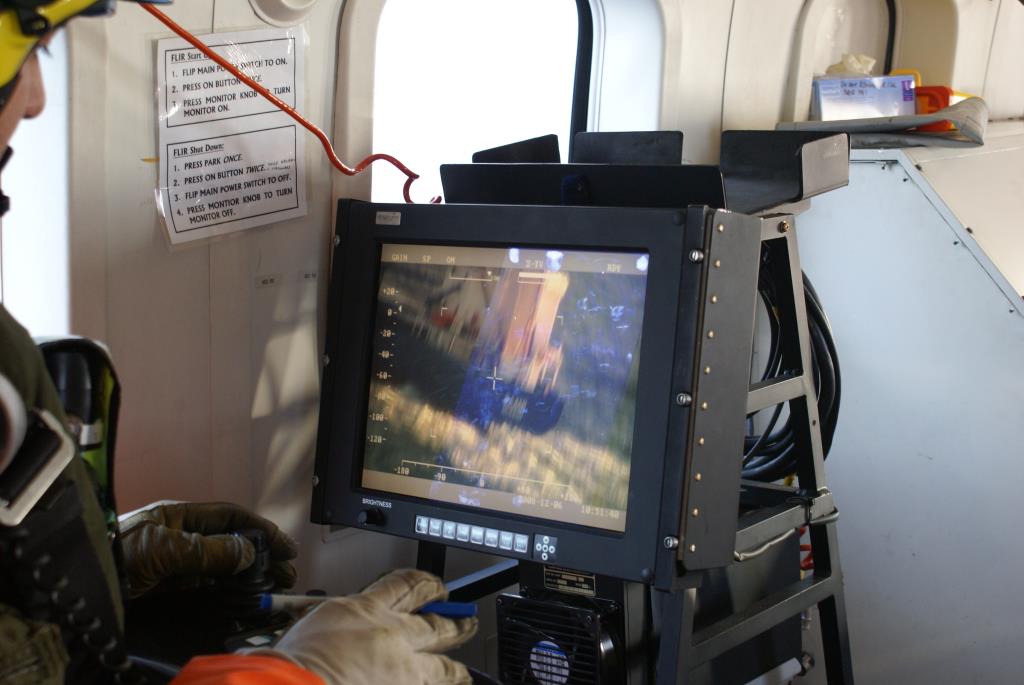
We continue our preparations with a safety briefing. Neville runs through all aspects of our upcoming flight. We will attempt to rendezvous with a freighter off the coast of Waterford and if conditions allow we will drop a winchman onto the deck of the ship. After our briefing we suit up in immersion suits and get ready for the off. Walking into the hangar area you cannot but be impressed by the setup. You could eat you dinner off the floor here! Our ship for the day stands in the hangar looking immaculate. The Sikorsky S61-N looks about the size of your average coach with a huge rotor attached!
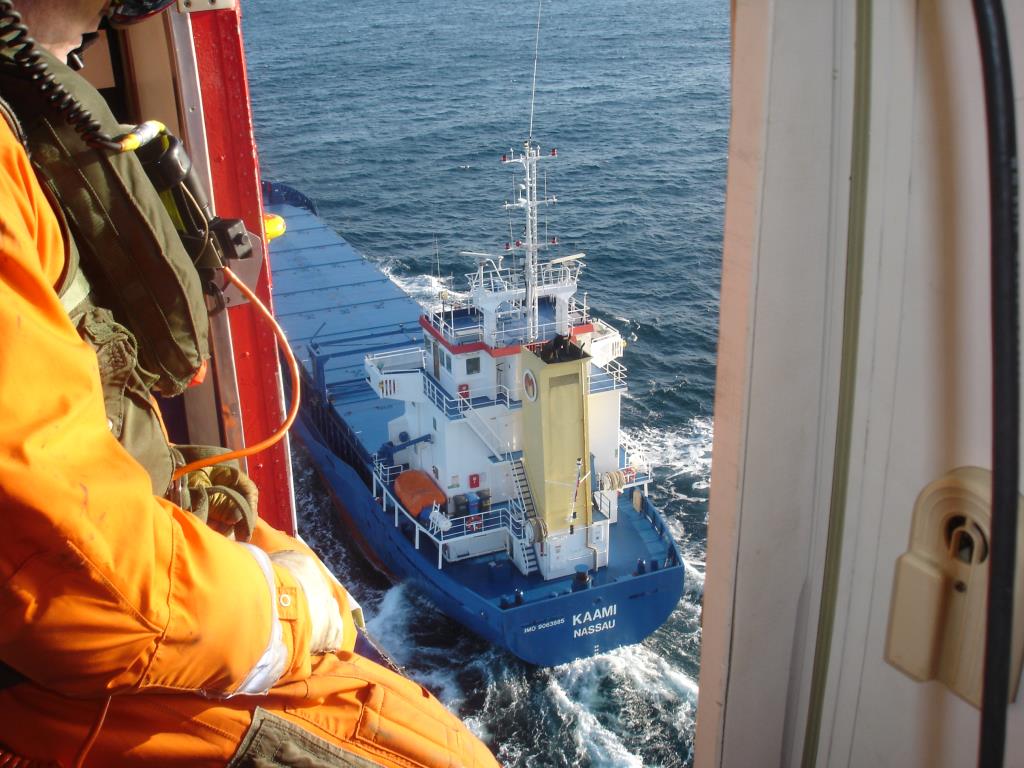
Once the helicopter is towed outside engineers finish their pre-flight checks. Martyn, captain on the day, and Dara, co-pilot on the day, begin to progress through a seemingly endless list of checks both outside and inside the chopper. Neville is the winch operator for the operation and Andy Bernos is the winchman. Each of the crew goes through a systematic list of checks, observations and even calculations, all designed to ensure the safety of the crew during the tasking ahead. I must admit that I am not the most confident flyer, but I couldn’t believe how unconcerned I was about the flight. The fact that I could see the professionalism of the crew and the fact that through my headphones I could hear what was going on had me more chilled out than I would be heading out in our own boat!
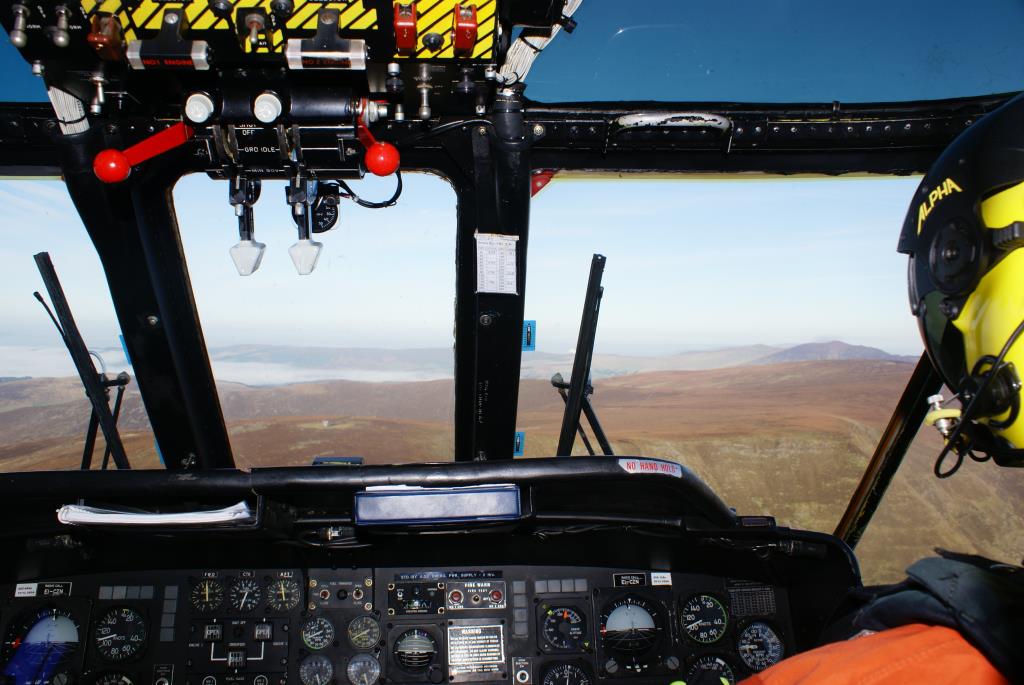
We taxied out to the runway and within minutes are aloft and heading for the approximate position of the freighter. The helicopter is unbelievably stable. We are soon heading out past Hook Head for open water. Andy is sitting across from me at the rear of the chopper and is busy scanning the sea for signs of the ship. He is using the latest Forward Looking Infra-Red (FLIR) camera system to locate our target. Long before we can see the ship the imaging system picks up the heat generated and the ship is clearly visible on screen. Closer to the target the camera picks up the name of the vessel and Andy contacts them on the VHF to see if they want to be participants in a training exercise. They agree – the lads have yet to be refused – and immediately the team go into a set routine by which they position the helicopter and judge hover points.
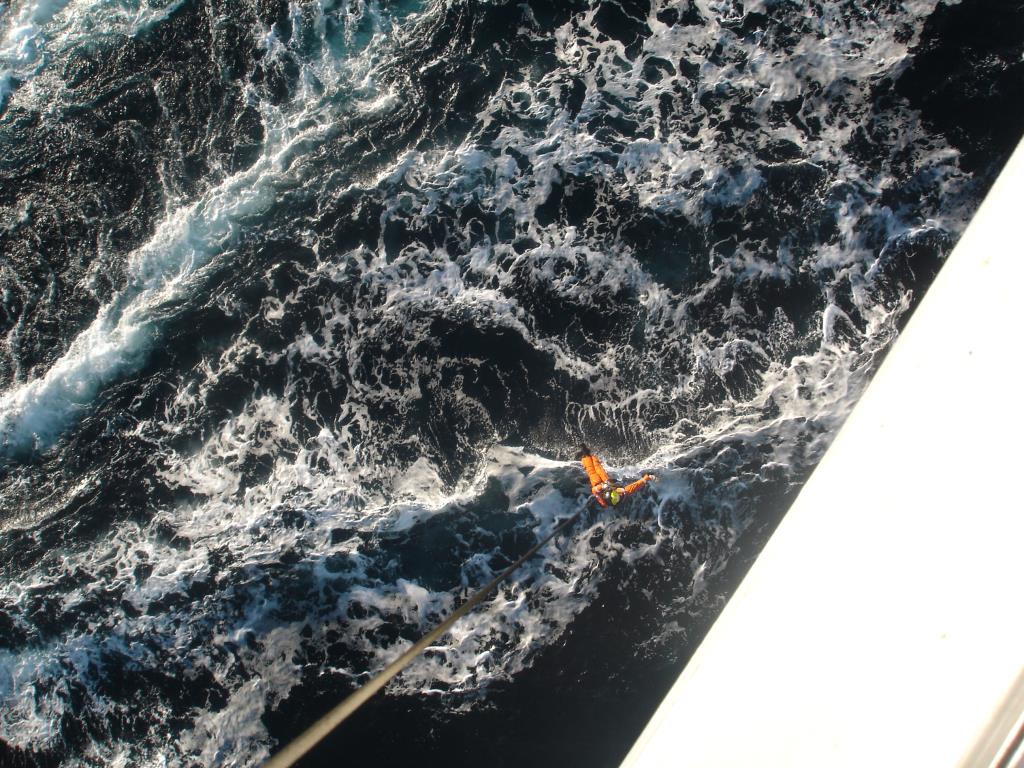
As soon as Andy is strapped into his harness and onto the winch he is lifted out the door by Neville who is operating the winch. At this stage Neville is the eyes of the captain as he calls out positional changes in order to get the winchman onto the deck. The captain cannot see where Andy is about to touch down on the freighter Kaami. This winch operator’s patter is fascinating to listen to as captain, co-pilot, winch operator and winchman combine to get the man on deck. I am as relaxed as I have ever been despite being in a single decker hovering a mere few inches from a huge VHF aerial attached to the mast of the freighter. Martyn and Dara have over forty years SAR experience between them and the coolness gained from many hours experience shows. For the next phase of the exercise Neville launches a Hi-line down to Andy on the deck of the freighter. One the line has been established Neville calls Seán forward to the open doorway. Neville fits him with a lifting harness and before he has a chance to consider his plight he has been lifted by the winch and is heading downwards, piloted by Martyn, guided by Neville to the waiting Andy on the deck of Kaami. After a few moments on the deck of the ship the process is reversed and the two lads are winched back into the helicopter. It is so professional as to be mundane for the crew but for Seán and myself it is and incredible experience. Despite the ease of the operation I could imagine the difficulty that operating in the dark with gales and rain would make. The training mission successful, we head back towards Waterford. I am amazed at the power of the FLIR as Andy picks out isolated sheep on the mountainsides. This is the tool that picks out lone survivors from the inky blackness of the sea at night. Many owe their lives to this piece of equipment.
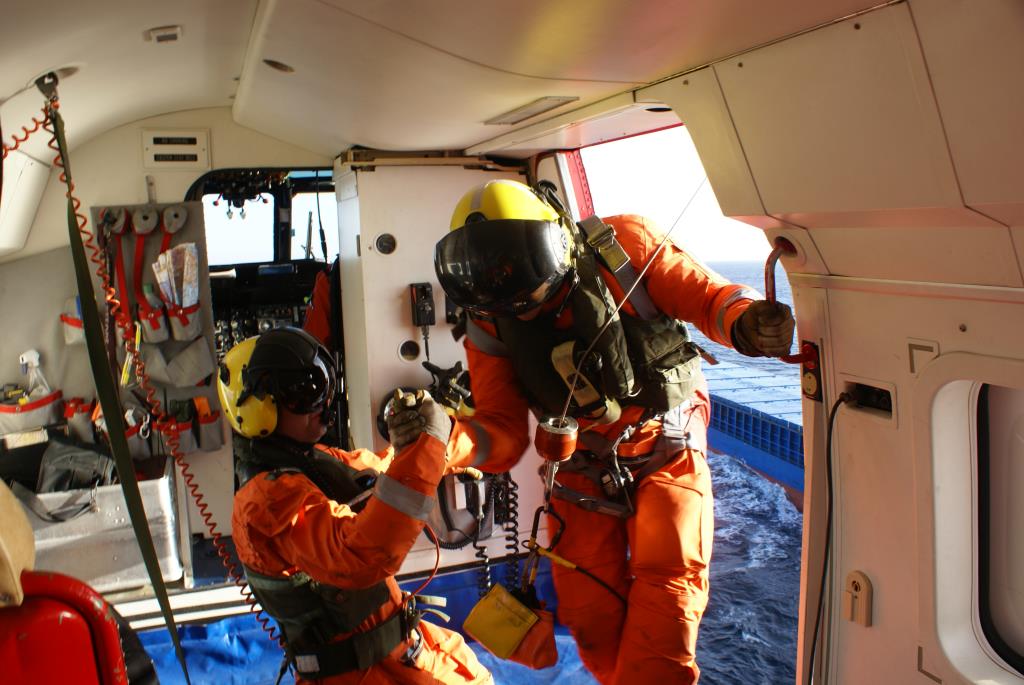
All too soon we are back at the airport in Waterford. So what could we take from the experience? The first thing is that we have no desire to become a statistic. It is important that each of us does our utmost to ensure that all equipment on our vessels is in as good working order as possible. Make sure that you carry a VHF radio. Your mobile phone may not have service when you need it. It is important that everybody on board, whether licensed to use a VHF or not, is aware of the procedure for calling the coast guard on channel 16. It is important that everyone is capable of reading your current position off the GPS. Most plotters do not show your position coordinates on the main map screen so be sure your crew can scroll through the pages. One of the realisations I had when flying was just how big the sea is and how difficult a proposition it would be to locate a small angling vessel when given an inaccurate position. To this end it is important that if you are in trouble it is best to stay with your craft. It is easier to locate a semi-submerged boat than a single person in the water. If you have an old style VHF consider upgrading to one of the modern Digital Selective Calling (DSC) sets. In an emergency these sets will broadcast your current position if connected to a GPS and if you have your Maritime Mobile Service Identity (MMSI) number programmed into the radio.
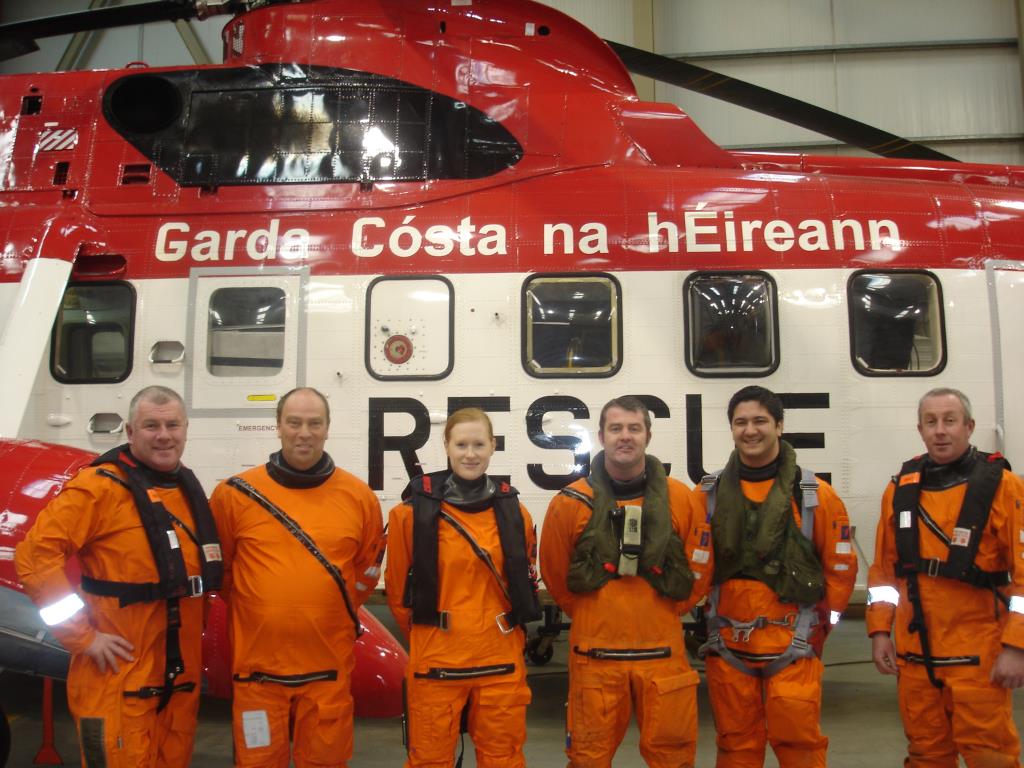
Many of us do not consider our flare packs – we are as guilty as anybody! Are yours in date? If not, get a new pack before venturing out this year. Their importance was underlined by a tale Neville related about the rescue of two survivors from the sunken trawler The Honey Dew. The trawler had sunk and two of the four crew had managed to get into a life raft. They were 17 hours in the raft and helicopter crews had been searching in vain. Just as the helicopter was heading to search a particular patch of ocean Neville happened, by pure chance, to look out the side window and spotted a flare. The survivors were rescued far from the position where the boat had sunk and were lucky to escape with their lives. Most of us do not give due consideration to our life jackets. After our trip I headed home to inspect mine. I manually inflated the jacket and left it overnight to ensure there were no leaks. I inspected the inflation device and made sure that the gas canister was securely screwed into the inflator. When did you check yours last?
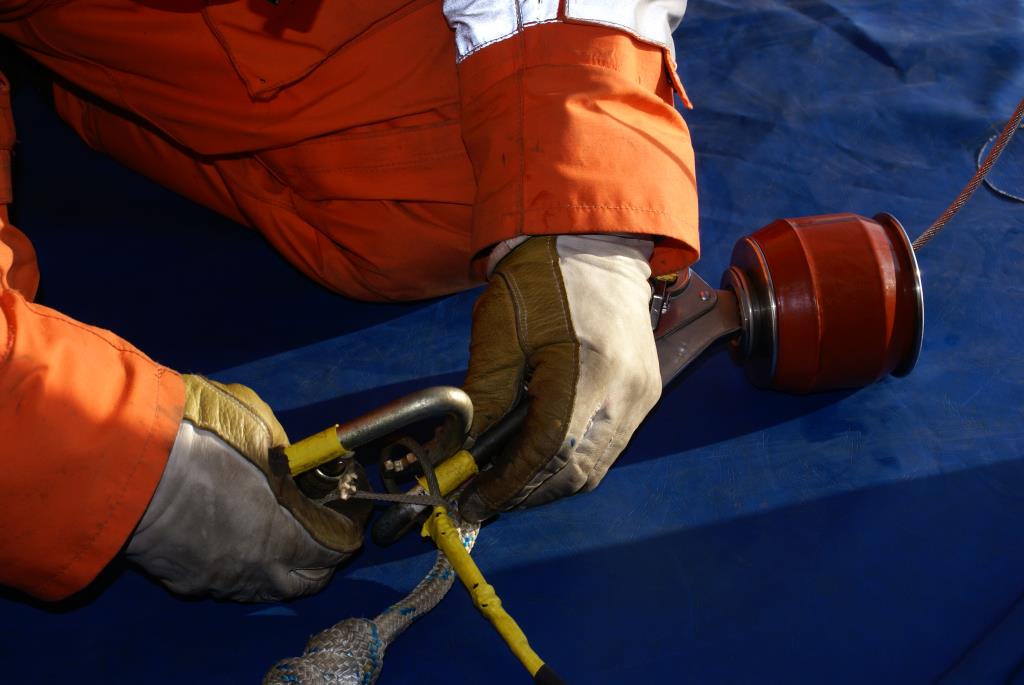
It is important to have a fire extinguisher on board. Make sure it is of a type that will put out petrol fires as this is the most likely source of fire on board a small boat. Check your first aid kit too, as it may have gotten damp over the winter. A simple kit with some plasters, a bandage or two, some sticky tape and some wipes to clean wounds is plenty to have on a small boat. It is no harm to carry some paracetemol as well. The most common injuries on board are cuts from filleting knives and in most cases these need not spoil the day, however serious blood loss will usually entail a trip on the red and white bird. As well as the major safety devices for your boat you should carry a basic tool kit that suits your engine. A few spanners and screwdrivers as well as some spare fuses are essential. Check your electronics to see if you require glass fuses as well as the blade fuses fitted to most engines. We always carry a spare anchor on board, a simple fold up job that will do the job if we lose the main anchor. I would hate to think of being without an anchor while in a position close to the shoreline and an engine failing to start.
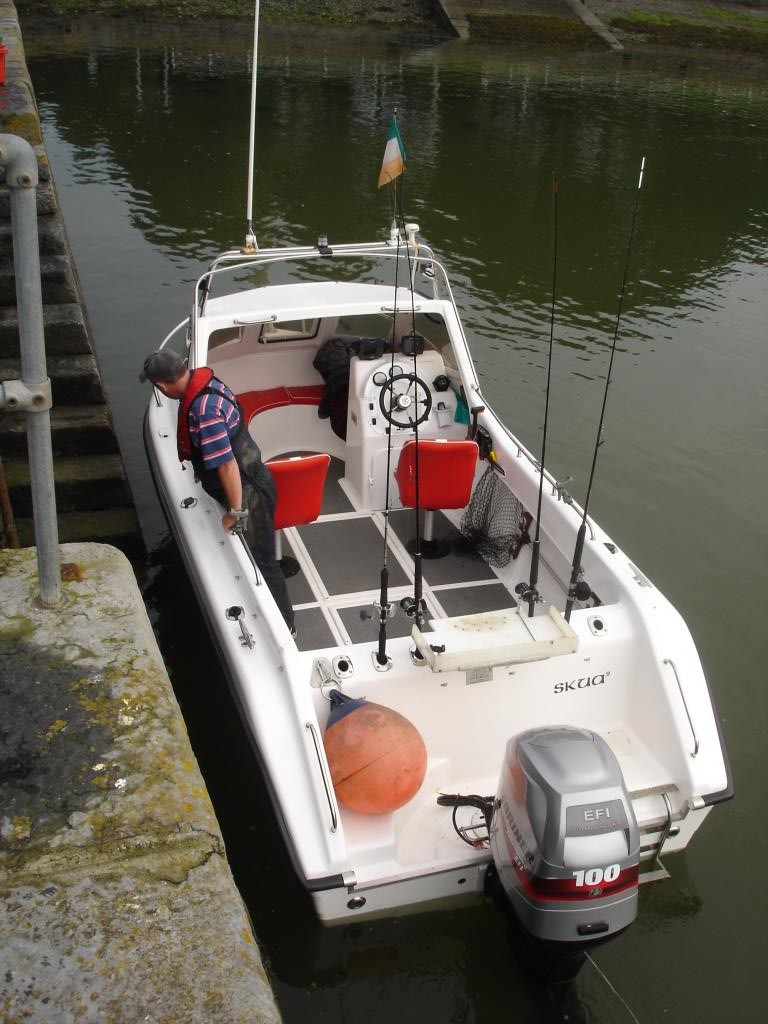
While most small boats do not carry emergency position indicating radio beacons (EPIRBs), Neville showed us an innovative system that he has fitted to Great White. The MOB Guardian is a system devised by McMurdo and endorsed by the RNLI. It involves a transmitter and a set of tags that are worn by each member of the crew. Once the signal between tag and the base unit is disrupted the system sounds an alarm while simultaneously alerting the emergency services. While the unit has obvious benefits for the commercial fishing industry it would be an excellent device for anglers who spend a good deal of their time fishing alone. Further information on the system can be found online or from the RNLI. A couple of years back the Department of the Marine produced an excellent booklet. The “Code of Practice for The Safe Operation of Recreational Craft” should be required reading for everybody wanting to take a boat on the water. The booklet is available from the Department or it is available online at www.transport.ie. link: https://www.gov.ie/en/publication/66ff7e-safe-operation-of-recreational-craft/
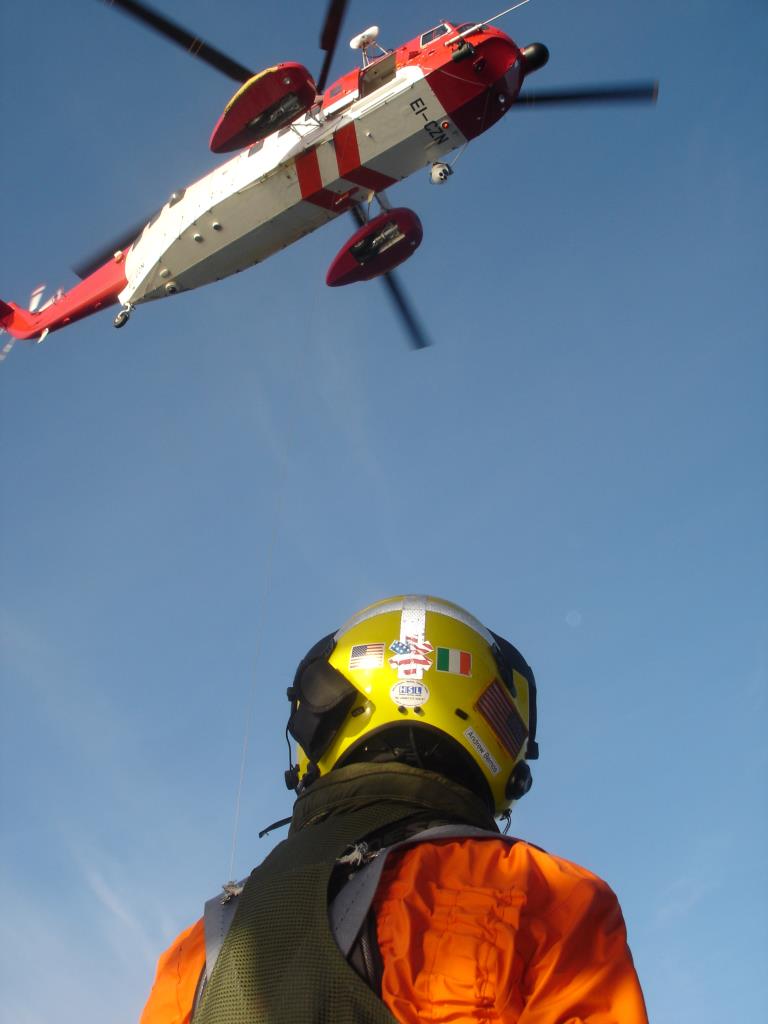
Our trip to Waterford was a most interesting one. You could not but be impressed by the setup there. It was impossible not to be affected by the people working there. The SAR crews are dedicated people; theirs is a vocation rather than a job. It was great to see how the team works in such a systematic way to achieve the best result while staying safe – a bit like all boat anglers should do on every trip, planning, checking and organising to ensure that all the elements are correct before and during a fishing trip. We can all get a little blasé about taking to the water whether for a serious fishing trip or just for fun. Spring is in the air and the season ahead beckons; it will not be long now until the clocks move forward and the water temperature increases. Get out there and enjoy, but do it safely! 